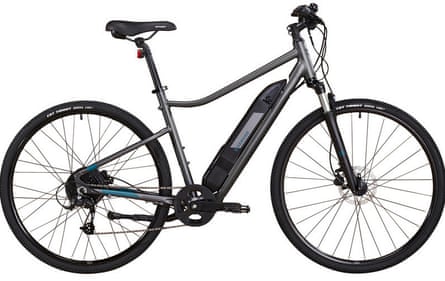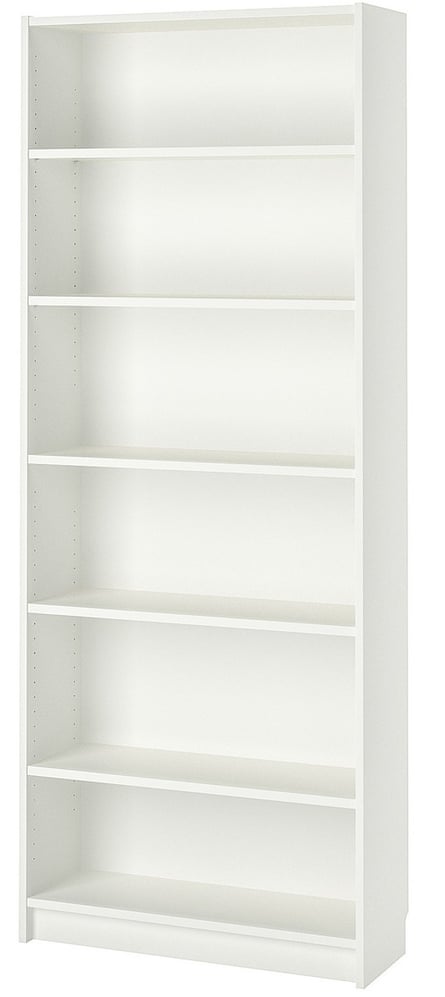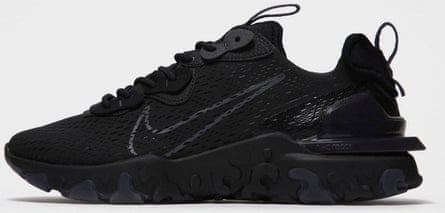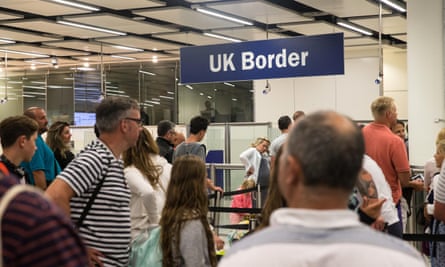Zara is charging British shoppers as much as 50% more than in Spain, while Decathlon partly blames Brexit for markups on e-bikes that can be up to £250 pricier in the UK than in France.
The figures come from a snapshot survey by Guardian Money that examined prices of popular items at pan-European retailers including Ikea, Apple, JD Sports, and H&M, as well as Zara and Decathlon. It compared prices in the UK, Germany, France, Spain, Italy and Ireland.
It found that while at some retailers, such as JD Sports, prices are broadly similar across Britain and the EU countries, at others prices in the UK are markedly higher. None of the retailers had generally lower prices in the UK.
The findings add another twist to the current UK cost of living crisis.
Zara, Europe’s biggest clothing retailer, has some of the biggest percentage price differentials between the UK and the rest of Europe.
A British shopper pays £49.99 for a linen blend tunic dress at one of Zara’s stores in the UK, equal to €58.70 at current exchange rates. But at Zara in Germany, France, Italy and Ireland, the price is €49.95, and in Spain only €39.95.
A men’s hoodie that sells for £45.99 in the UK, equal to €53.99, sells for only €35.95 (£30.62) in Spain, meaning a buyer in Manchester is charged 50% more than in Madrid for the identical item.
Decathlon, the French sports goods retailer that operates 2,000 stores across 56 countries, charges £1,299.99 for a Riverside electric bike in its UK stores, equal to €1,525. But in France, Spain and Italy, the price for the same item is €1,199. The e-bike buyer at Decathlon’s Brighton store is therefore paying €326 (£278) more than if they popped across the channel and bought it in Dieppe.
 View image in fullscreenA Riverside electric bike at Decathlon. Photograph: Decathlon
View image in fullscreenA Riverside electric bike at Decathlon. Photograph: Decathlon
Decathlon largely blamed Brexit for the price differentials. It said: “The UK’s exit from the European Union has made it more expensive to import stock. It also meant that Decathlon UK had to expand the size of the supply team in order to deal with the additional administration, costs and duties associated with Britain’s exit from the customs union.
“In the UK specifically, we have the obvious challenges involved in dealing with constantly changing exchange rates, coupled with the post-Brexit burden of having to pay import duties twice on a number of products (once as goods enter the EU, and again once they enter the UK).”
The research findings were shown to Zara but the retailer declined to comment.
The survey had substantial limitations: it only compared prices on a relatively small number of identical items at each retailer, and comparative prices for the UK are subject to change according to daily fluctuations in the euro-sterling exchange rate.
But it was notable that shoppers in Britain are paying either significantly more, or largely the same, as shoppers elsewhere in Europe. Rarely did we find examples of prices that were lower in the UK than on the continent.
The following is what we found when we went shopping at each retailer in the UK and elsewhere in Europe.
Zara
Our survey found a fairly consistent pattern of pricing, with the lowest prices in Zara’s home market of Spain, then a consistent band of prices across Euro-denominated countries, then often (although not always) higher prices in the UK.
 View image in fullscreenZara’s linen blend tunic dress is £49.99 (€58.70) in the UK but in Germany, France, Italy and Ireland the price is €49.95, and in Spain it is only €39.95. Photograph: Zara
View image in fullscreenZara’s linen blend tunic dress is £49.99 (€58.70) in the UK but in Germany, France, Italy and Ireland the price is €49.95, and in Spain it is only €39.95. Photograph: Zara
We found that for the store’s lower-price items – such as shirts – its prices in the UK were on a par with most other European locations, although higher than in Spain.
Concerned that we were being unfair on the retailer – maybe chancing across some items that just happened to be more expensive in the UK – we trawled through multiple items at the store, and found even bigger price differentials than at first.
Take, for example, a printed kaftan dress that sells for £79.99 at Zara in the UK – equal to €93.90. In Germany it is €69.95, and in Spain only €59.95. So British buyers are paying 56% more than the Spanish.
However, we also found a men’s linen shirt that is £32.99 in the UK, equal to €38.73, that was €39.95 in Germany – €1.22 more expensive. But in Spain it was €29.95.
Zara is part of the Inditex group, which includes brands such as Massimo Dutti, Pull&Bear and Bershka.
At Massimo Dutti, we found similar price differentials to Zara. A men’s wool suit blazer sells for £229 in the UK, equal to €268. But in Germany it’s only €219, and in Spain, €179. The buyer in Britain is paying €89 more than the buyer in Spain for the identical jacket.
We don’t know why Zara and Massimo Dutti appear to charge so much more in the UK, and how much of the difference is because of Brexit, as the company declined to answer our questions. What we do know is that Inditex made a £98m profit in the UK in 2021, according to its global annual report.
The conclusion? If you are heading to Spain this summer and have your eye on a Zara dress or top, it’s definitely worth buying it there rather than in the UK – subject to the UK’s post-Brexit customs and duties rules when you bring it back into the country.
Decathlon
The retailer has 47 stores across the UK, usually edge-of-town big-box outlets near companies such as Ikea. But while it is highly regarded for the quality of its own-brand sports merchandise, we found prices in Britain can be significantly higher than elsewhere in Europe.
As noted previously, its Riverside e-bike retails in Britain for 27% more than in France or other European locations.
There are similar price differentials on other items. For example, its standup paddleboard sells for £299 in the UK, equal to €351. But in France it is €269. France is Decathlon’s home turf but elsewhere in Europe prices are lower than in the UK. That paddleboard is €269.99 in Germany and Italy.
Guardian Money included Ireland in the overall price survey because in many cases what is sold in Irish stores is sourced from logistics centres in the UK, so one might assume prices would be similar to the UK, plus maybe a bit extra for the additional transportation.
 Ikea’s Billy bookcase. Photograph: Ikea
Ikea’s Billy bookcase. Photograph: Ikea
But even in Ireland, where consumers have long endured some of Europe’s highest retail prices, Dublin’s Decathlon came out cheaper than the UK – in some cases substantially so.
Decathlon explained that Brexit, plus other factors, were behind the higher UK prices. “First and foremost, it is important to note that each Decathlon business unit operates as an independent, autonomous entity in its respective country. Decathlon has a range of very different competitors in each of the countries in which it operates, and pricing has to reflect this.”
In relation to Ireland, the company added: “Their stock comes directly from France, and given that they are an EU member state, they are not burdened with the same additional costs as the UK.”
Ikea
The first item we chose to price-test was the furniture retailer’s classic product: the Billy bookcase. The basic version is £50 in the UK, equal to €58.70 at the time of the test. In Spain it was €59, and in France €59.99 – so almost no difference. But in Germany it was €55, so a few quid cheaper than the UK.
We then moved on to a chest of drawers: the Koppang. This was £150 in the UK, equal to €176. Germany and Spain were this time significantly cheaper, at €149, or 15% cheaper than the UK, although France was higher.
Next we examined a sofa. Ikea’s bestselling basic Klippan two-seater sofa in dark grey is £279 (€327) in the UK, but €259 in Germany and €249 in France. So shoppers at Ikea in Britain are paying almost a third more for a basic Ikea sofa than those in France.
We asked Ikea the same questions as we put to Zara and Decathlon. It declined to answer the questions and sent a statement instead. It said: “We are not immune to the current macroeconomic developments facing businesses, retailers and the public at large. Many Ikea countries have seen price changes; however, the changes will differ from country to country as prices are influenced not only by the raw material prices but also by transport, logistical costs and local market conditions.”
JD Sports
This UK company based in Bury now operates in 29 countries, with 3,300 stores.
But don’t wait to buy your trainers on holiday – prices were very similar across the UK and elsewhere in Europe.
For example, the Nike React Vision men’s trainers are £120 in the UK, equal to €141. But in every other European market we tested, the price was €135. So the UK price was more expensive – but only by 4%. That is the sort of gap where movements in the euro-sterling exchange rate could soon wipe out any difference.
 View image in fullscreenJD Sports prices Nike React Vision men’s trainers at £120 in the UK (€141) but in every other European market Guardian Money tested, the price was €135. Photograph: JD Sports
View image in fullscreenJD Sports prices Nike React Vision men’s trainers at £120 in the UK (€141) but in every other European market Guardian Money tested, the price was €135. Photograph: JD Sports
Apple
Apple products have long been cheaper in the US than in Europe but within Europe the differences, judged by our price test, are minimal.
We looked at the new iPhone 13 Pro Max, 6.7in, 256GB in various markets around Europe. This was the only item where the UK came out cheapest – although by only 1.5%.
The UK price was £1,149, or €1,349. In Germany it is €20 more expensive, and in France and Spain it is €30 pricier. Inevitably we found it cheaper in the US, where it retails for just under £1,000 on current exchange rates – a saving of £150 compared with the UK.
Apple appears to run a pricing model with small price variations across Europe, which makes it pointless for shoppers to cross borders to buy, while offering its products significantly cheaper on its home turf, the US. It did not respond to questions submitted by Guardian Money.
 View image in fullscreenWithin Europe the price differences of Apple products, judged by our test, were minimal. Photograph: Samuel Gibbs/The Guardian
View image in fullscreenWithin Europe the price differences of Apple products, judged by our test, were minimal. Photograph: Samuel Gibbs/The Guardian
H&M
We found that the clothing company H&M prices its goods in the UK almost identically to the rest of Europe.
We looked first at a linen blend shirt dress, which retails in the UK stores for £39.99, equal to €46.97. In every other EU market we tested, the price was €49.99, so the shopper in Britain is saving about £3.
We then examined some men’s cargo joggers that are £29.99 in the UK, or €35.23. In EU markets the price was €34.99, so a few cents cheaper.
In a statement, H&M said: “Our prices should be, more or less, the same across markets; however, they can differ slightly due to local taxes, cost levels and local external variables. We are happy to see the outcome of your price comparison reflects that, and we continue to meet our customer offer.”
How we did the survey
Prices were taken from each retailer’s direct-to-consumer website in each individual country. Prices taken 18-19 July. The sterling-to-euro conversion was made on 22 July at a rate of £1 = €1.1740.
Duties and taxes: beware extra charges
 View image in fullscreenBritons have to declare any goods worth more than £390 on their return. Photograph: Tommy London/Alamy
View image in fullscreenBritons have to declare any goods worth more than £390 on their return. Photograph: Tommy London/Alamy
If you spend more than £390 in shops elsewhere in Europe this summer, get ready to pay customs duties and VAT on your return – which can easily add 20% or more to the price paid.
This is the first big summer getaway where millions of returning British holidaymakers will have to decide if they should walk through the “something to declare” gate at British airports after shopping abroad.
The vast majority of holidaymakers whose spending consists of little more than flip-flops or sunglasses will not be hit by the tariffs.
But a holidaymaker splashing out on, say, a €500 suit or dress while in an EU country, would have to pay up to £99 in duties and VAT when they return to the UK.
The British government has an online tool for calculating and paying tax and duties.
Holidaymakers are liable for taxes and duties on all goods bought over the £390 allowance
Most of the extra can be VAT rather than customs duties, which are charged at a flat rate of 2.5% on goods worth between £390 and £630. Using the example of a €500 suit, the HM Revenue and Customs site shows a £10.76 customs charge and an £88.24 VAT charge.
Holidaymakers are liable for taxes and duties on all goods bought over the £390 allowance. For example, if you are bringing in a £500 laptop and a £100 watch, you will need to pay tax on the watch and the laptop.
Navigating the rules is not easy. You have to declare where the item was made as well as where it was bought. That €500 item of adult clothing bought in Spain comes with a £99 charge if it was made outside the EU but £86.08 if made inside.
If you live in Northern Ireland, then it’s a completely different story, with the province treated as if it is inside the EU for customs purposes. That means the tax on an item of adult clothing bought in Barcelona and taken home to Belfast is zero.
HMRC’s website says: “You do not pay duty or tax on alcohol, tobacco and most other goods you bring in to Northern Ireland from the EU.”
One bonus for the holidaymakers is that duty-free shopping is once again good value when visiting EU countries from Britain.
You can bring in up to 18 litres of wine, 4 litres of spirits or 42 litres of beer duty-free into the UK.
But getting that lot on to a Ryanair flight might be a bit of a struggle.




Leave a Reply
You must be logged in to post a comment.